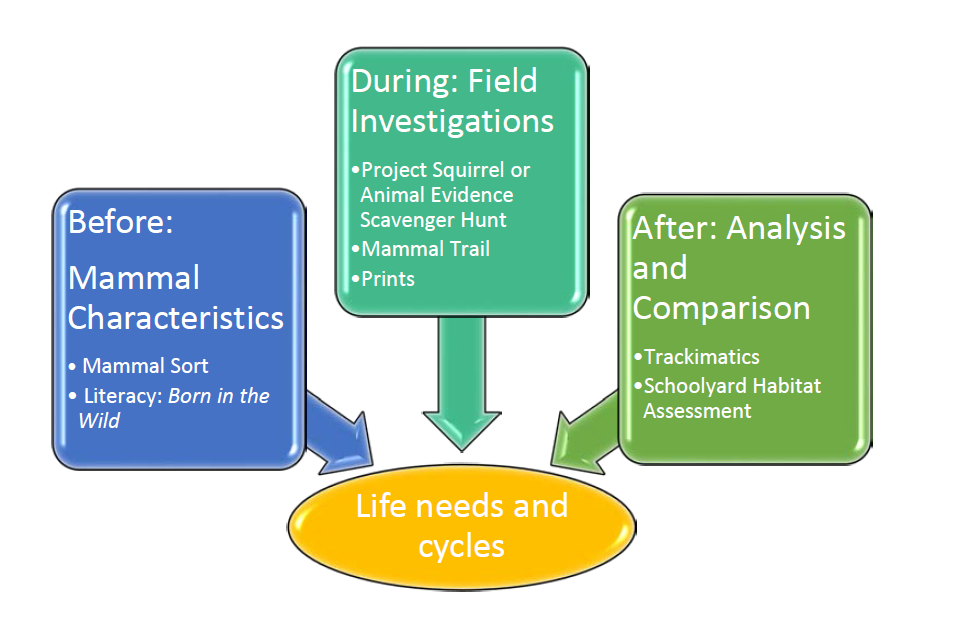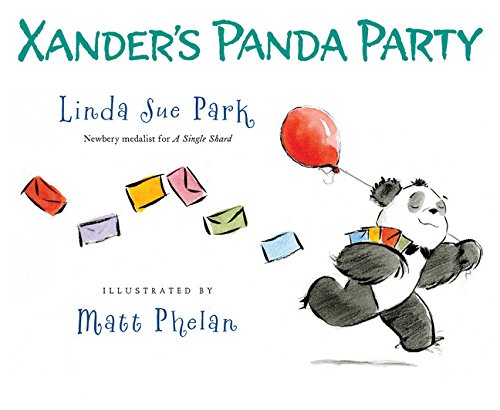MAMMALS
What makes a mammal a mammal? What mammals live in Virginia, and what special tools do they have to survive in their habitat, and through our seasonal cycles? What life needs do they need to meet to successfully navigate their life cycle? Student mammologists will explore, observe, investigate, analyze and synthesize these questions through sorting, literacy, math, and field observations. Fee: $4 per student.
Target SOL (for the field investigation. Additional SOL apply for before and after activities.)
Science (2018): K.1, K.3, K.5, K.7; 1.1, 1.5, 1.7; 2.1, 2.4, 2.5, 2.7
Math (2016): K.1, K.2, K.12. 1,1, 1.2, 1.13. 2.15
English (2017): K.3, K.7; 1.5, 1.6, 1.7; 2.4, 2.5, 2.6

To enhance classroom connections, we have developed lesson clusters. Field investigations are more meaningful to students when they are integrated into their curriculum. This lesson cluster can be used to introduce and/or review and synthesize for a systems approach and increase depth of knowledge. Before-visit activities introduce students to the physical characteristics of mammals and focus on sorting and very basic classification. With the after-visit activities, students delve more deeply into sorting and comparison and habitat assessment. Click on each of the sections below to learn more about the cluster's activities. Click here for the full lesson cluster (see each section for individual activity plans).
NOTE: hover over bolded phrases to find links to resources
Before: Mammal Characteristics
Before-visit activities use sorting and language arts to compare and contrast attributes of Virginia mammals and to learn about mammal life cycles and baby mammal life needs.
Born in the Wild: Baby Animals and Their Parents by Lita Judge
- Video of Born in the Wild reading
During: Field Investigations
During your field investigation at Blandy, your students will be transformed into mammologists and engage in several indoor and outdoor lessons exploring mammals of Virginia and habitats at Blandy.
Below is an overview of the “standard” program activities to assist you with integrating this field experience into the classroom experiences. This will change due to weather, the volume of students, or communication with environmental educators. Click here for a sample schedule (will vary depending on the number of classes).
- Prints: By closely observing photographs of mammals, their feet, and plaster prints, students draw conclusions about commonalities in all mammals and the specific characteristics that allow them to thrive in their specific homes. Older students will graph their observations, while younger students engage in further sensory exploration.
- Mammal Trail: Students learn that mammals use sound, body language, and smell to communicate. Using their sense of smell, they learn about the appearance, diet, reproduction, habitat, and one cool fact about a Virginia mammal.
- Field Investigation: Project Squirrel What are the squirrels up to? We’ll look for and watch squirrels at Blandy, observing and tallying behaviors for reporting in Project Squirrel, a community science project. Students will look for food and water sources, shelter, and other evidence that the life needs of squirrels have been met while developing the concepts of habitat and seasonality.
VA Standards Addressed: Science (2018) K.1, K.3, K.5, K.7. 1.1, 1.5, 1.7. 2.1, 2.4, 2.5, 2.7.Math (2016): K.1, K.2, K.12. 1,1, 1.2, 1.13. 2.15. English (2017): K.3, K.7. 1.5, 1.6, 1.7. 2.4, 2.5, 2.6
After: Analysis and Comparison
After-visit activities build on the field experience at Blandy. Your mammologists will have the tools to determine if your schoolyard could support the mammals they learned about at Blandy, and will perform mathematical analysis of their plaster prints.
Trackimatics (Tracks and Math)
Literacy

Born in the Wild: Baby Mammals and Their Parents Non-fiction
Author and Illustrator: Lita Judge
Grades K-3; Lexile: AD900L
Suggested Activities:
-
Observe the changes in the babies over time. Watch the video once, then ask students what changes they observed over time. Watch it again, this time instructing students to ask you to stop the video when they see a change.
- Compare and contrast two developments. What is similar, what is different?
- Connect to the reading: how are the babies being cared for/how are their needs being met? Who is doing the caring? Should just anyone care for a baby animal?
 Xander's Panda Party Fiction
Xander's Panda Party Fiction
Author: Linda Sue Park; Illustrator: Matt Phelan
Grade: PK-3; Lexile: AD660L
Suggested Activities:
Use images from the book* to create sets of party guests (recommended – have an illustration on one side and a real image of the animal on the other so that animal characteristics are more easily seen). Have students sort the guests based on different characteristics as the book is read.
*Be sure to follow copyright laws! Use of these images in the classroom may fall under the fair use provision of copyright law (photocopies DO NOT fall under the classroom exemption), but your agency may require you to contact the publisher for written permission.

